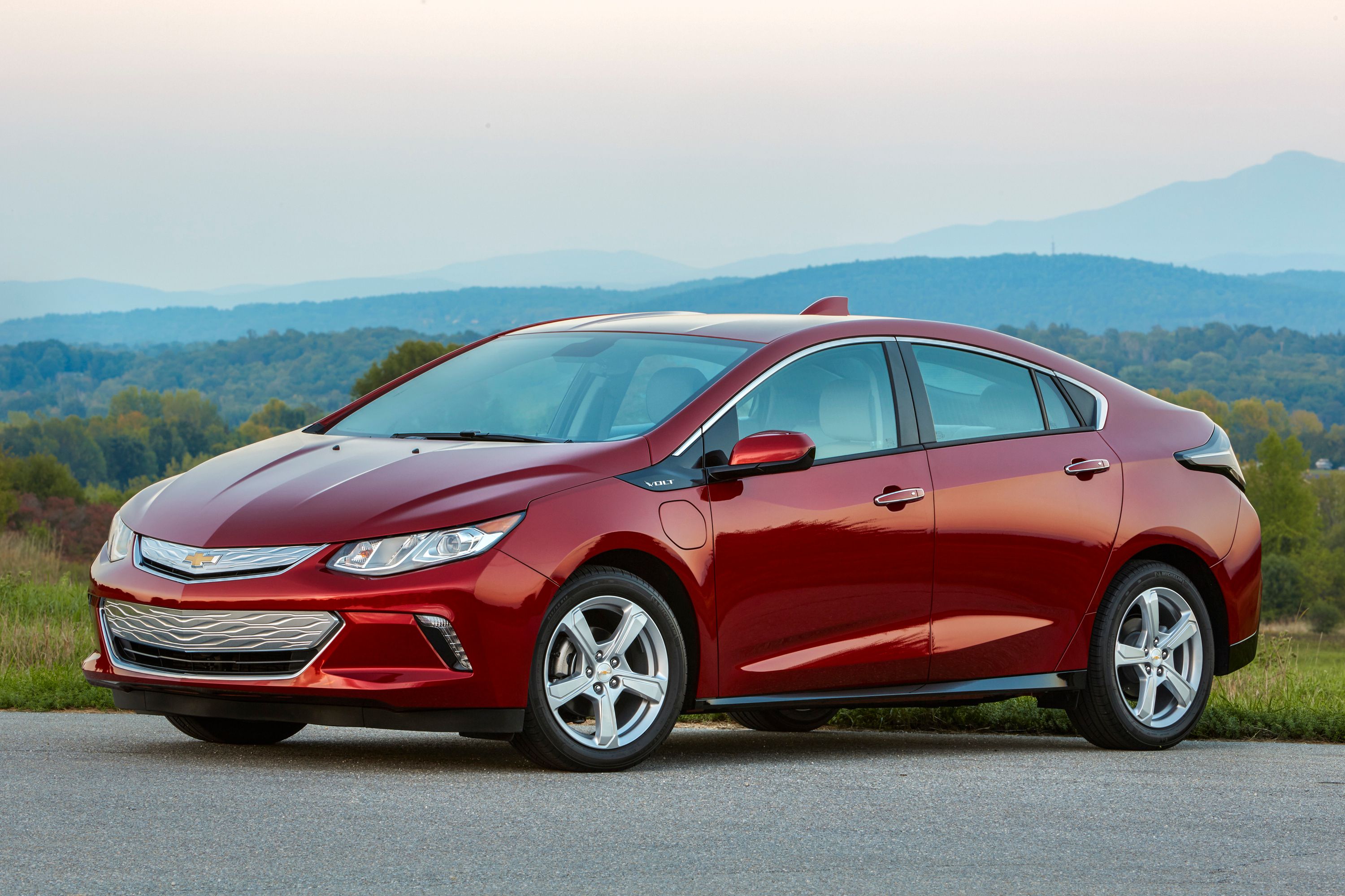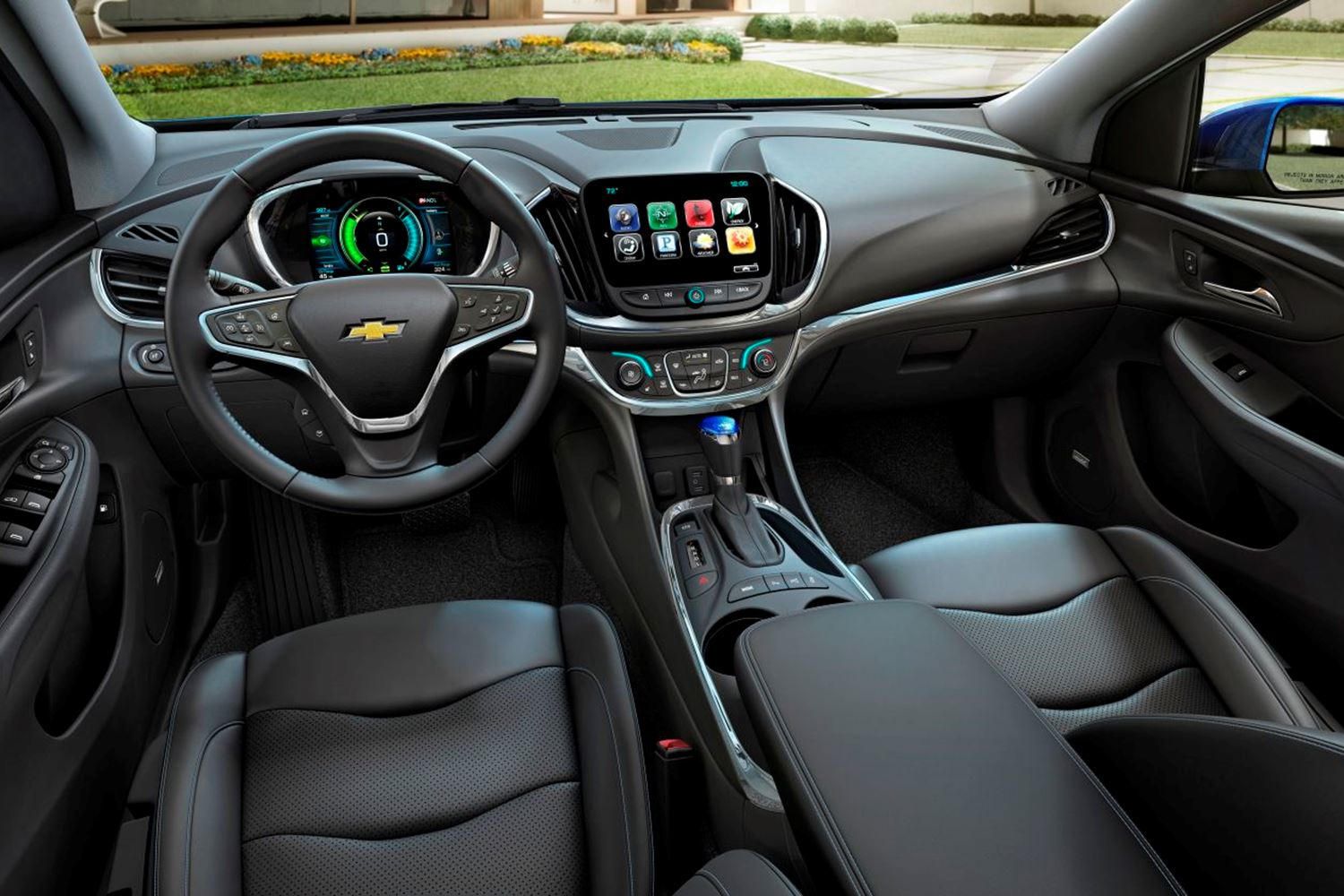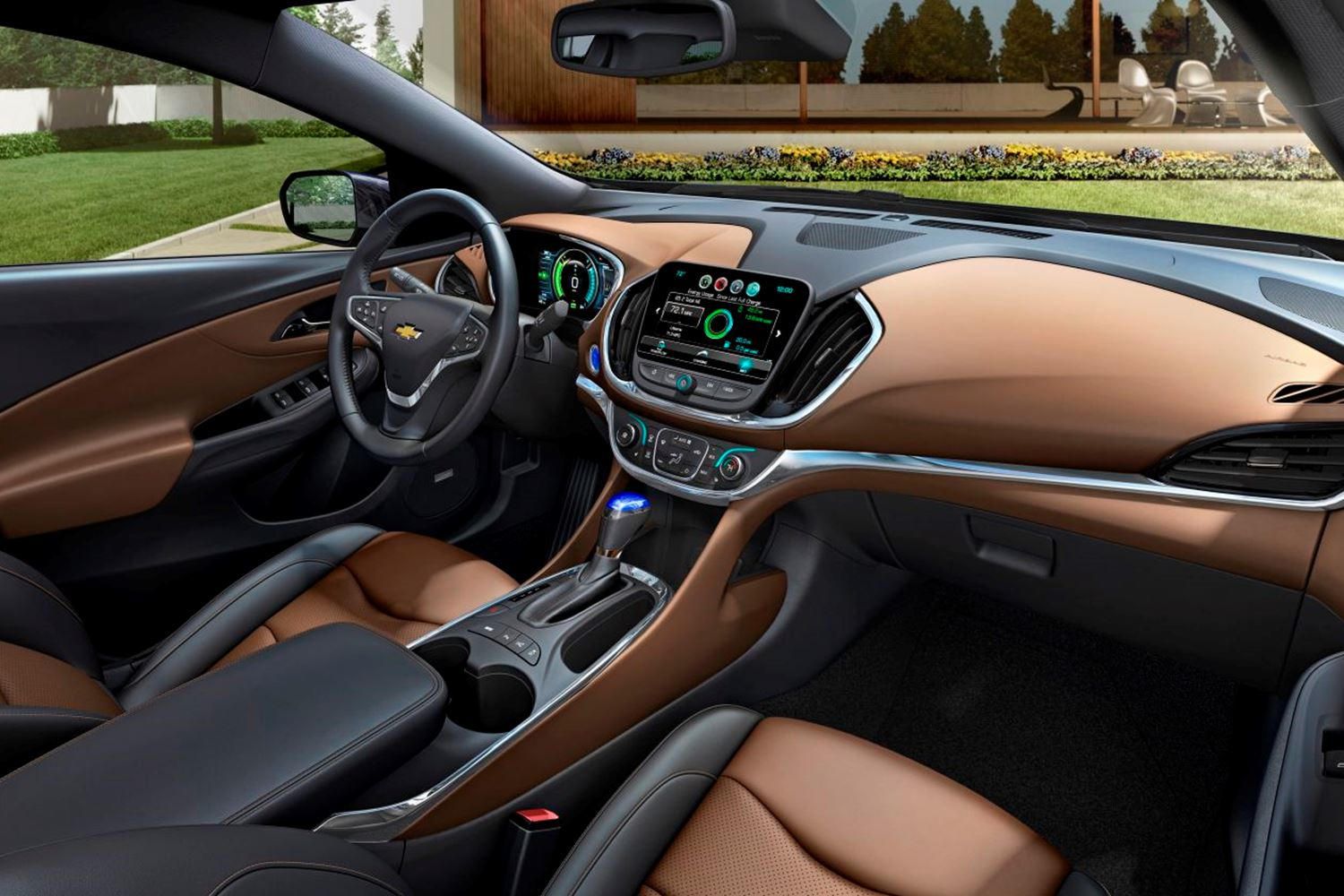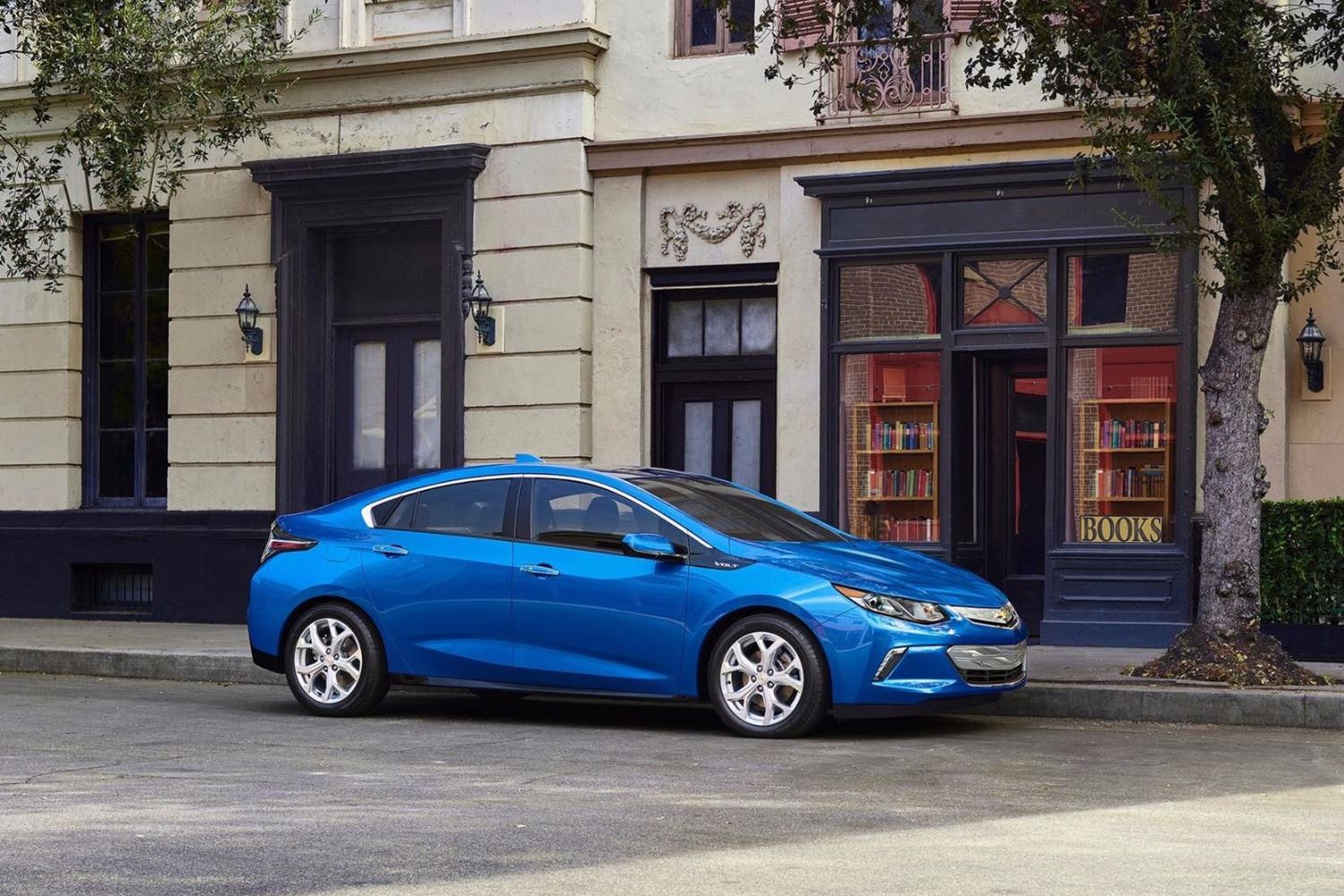Everything you need to know
It's a pretty good range-extender hybrid, but the price of the Chevrolet Volt does hold it back from greatness.
As revolutionary as the old Chevrolet Volt was, the gasoline-electric range extender hybrid was also a fairly flawed vehicle. The practicality wasn't that impressive, it had a slightly noisy engine when the gasoline part of the powertrain fired up and the asking price was quite considerable. In quite a few ways, the Chevrolet Volt does present a sizeable leap forward for vehicles of this ilk, and we can genuinely see the usefulness of a vehicle for buyers who regularly drive in built-up areas. We'd probably go as far to say it's one of the better overall mainstream hybrids you can buy right now. The only issue that holds the Chevrolet Volt, though, is the price: rivals like the Toyota Prius and (if you're up for heading down the fully-electric route) the Nissan Leaf are noticeably more affordable to buy. If you can stomach the price, though, then by all means consider the Chevrolet Volt as your next car.
Very well built, but don’t expect much practicality-wise
The Chevrolet Volt's interior doesn't feel cheaply made, and all of the major pieces feel like they're well put together.
One of the more prominent complaints with the old Chevrolet Volt regarded the overall execution of the interior. Whilst the futuristic vibes were certainly appreciated, they didn't especially lend themselves to intuitiveness or ease of use. Plus, scratch below the sci-fi-esque aesthetics, and the overall quality of the materials wasn't that amazing either. Thankfully, those wrongs have been righted with the current Chevrolet Volt. Admittedly, the plastics used are a tad hard considering the car's higher asking price, but the Chevrolet Volt's interior doesn't feel cheaply made, and all of the major pieces feel like they're well put together. The controls are also pretty slick, too. Replacing the unintuitive touch capacitor sensors on the old Chevrolet Volt's dashboard center console are an array of well laid out buttons and knobs that are far more straightforward to operate when on the move. Plus, the standard-fit 8-inch touchscreen interface is also pretty simple to navigate, thanks to its clear resolution, responsiveness to inputs and its well laid out design.
The Chevrolet Volt is amongst one of the least practical hybrids on sale today.
As much as the Chevrolet Volt gets overall intuitiveness right, it also falls short of being particularly practical. Though space up front for the driver and the passenger riding shotgun is fine, the space in the rear is particularly compromised, with the relatively restricted head and leg room for the outboard seats meaning taller passengers will find it rather snug in the back. Worse still is the center rear seat. Thanks to the raised seat cushion, the already compromised head room is reduced even further, and the narrowness of the seat means three adults won't fit comfortably in the back. Factor in the limited amount of room in the foot well as a result of the battery packs that sit in the middle of the car, and it makes you wonder why the current Chevrolet Volt didn't follow in the footsteps of its predecessor and remain a four-seater car. Trunk space also isn't particularly great either. At 10.6 cubic feet with the rear seat backs in place, the Chevrolet Volt is amongst one of the least practical hybrids on sale today (even the least spacious Toyota Prius has a trunk capacity of 24.6 cubic feet, and the relatively high load lip may make the loading and unloading of heavier items a bit tricky at times. That said, the rear seat backs do almost fold completely flat – which, when you factor in the hatchback tailgate, means it's possible to fit a bicycle in the back if you're dextrous enough.
Fun enough to drive – but comfort and quietness are the Chevrolet Volt’s calling cards
Arguably a more appreciated aspect of the Chevrolet Volt's driving characteristics is the very well suppressed noise insulation.
Hybrids aren't usually renowned for their handling prowess, but the Chevrolet Volt does fare rather admirably in this regard. Granted, the fitment of low resistance tires is one of many reasons why the keener driving enthusiast would likely opt for a conventional gasoline-only compact car like a Mazda 3 or Ford Focus, but the Chevrolet Volt is still entertaining enough when you're behind the wheel. The steering is fairly direct in its responsive, meaning you can place the car where you want it on the road relatively comfortably, and the body control is fairly good bar a little bit of noticeable body lean when cornering (an unusual aspect to find in a hybrid, considering the mass of the batteries should make the center of gravity nice and low). All in all, whilst it isn't the sharpest vehicle to drive, the Chevrolet Volt also won't provide an unengaging drive for the sort of buyer who cares about that sort of thing – and is far superior to what a Toyota Prius offers in this regard. Arguably a more appreciated aspect of the Chevrolet Volt's driving characteristics is the very well suppressed noise insulation. Even when the gasoline engine does fire up, the Chevrolet Volt's cabin remains a rather silent and serene place to spend time in, with barely a hint of wind noise and tire roar.
One particularly impressive aspect of the way the Chevrolet Volt drives regards the regenerative braking system.
The ride quality is also pretty good in the Chevrolet Volt, and certainly makes up some of the ground lost with the more-prominent-than-we-would-like body lean. Even over rougher asphalt and larger bumps, the Chevrolet Volt remains rather composed, to the point where the Chevrolet Volt would be an ideal long distance cruiser if the hybrid powertrain weren't so obviously optimized for driving in built-up areas. One particularly impressive aspect of the way the Chevrolet Volt drives regards the regenerative braking system that helps use some braking energy to help replenish the battery packs. Whereas similar systems in rival cars are a little bit obtrusive and grabby, the setup in the Chevrolet Volt is very smooth and doesn't feel like the brakes are being operated via a switch.
Ignore the weedy engine: it’s the electric motors you should be focusing on
The 101-hp output, for instance, is more appropriate for a city car rather than a vehicle of the Chevrolet Volt's size.
On paper, the gasoline part of the gasoline-electric hybrid isn't amazingly impressive: the 101-hp output, for instance, is more appropriate for a city car rather than a vehicle of the Chevrolet Volt's size. However, the engine isn't really important here, as the main go is provided by the car's pair of electric motors. Whilst their outputs of 149-hp again aren't amazing, it's the 294 lb-ft of torque they produce that really define the overall driving experience. As all of that torque is available from essentially the moment you apply pressure to the (inappropriately-named, in this application) gas pedal, the Chevrolet Volt has more than enough oomph for standstill starts and acceleration runs from lower speeds. So much so, in fact, that you can actually overwhelm the driven wheels if you turn the traction control off.
Fuel economy is also appropriately impressive.
The 1.5-liter four-cylinder gasoline engine is also pretty good. As its only role is to be an on-board generator when the batteries run out of charge or you floor the throttle, the lack of power isn't a noteworthy concern, and the engine's surprisingly quiet and refined for a unit of this caliber – thus meaning the engine can fire up without you even noticing unless you're really paying attention. Fuel economy is also appropriately impressive. Though we highly doubt many Chevrolet Volt owners will achieve the combined 108mpg estimate, the powertrain itself is capable of returning 43mpg in the city and 42mpg on the highway. Better still, 53 miles of the Chevrolet Volt's 420-miles range can be done on electric power alone – thus meaning it should be possible to make a decent amount of your average commuter's journey on just the battery power.
Quite pricey for a hybrid
With a starting price of $33,220, the Chevrolet Volt is substantially more expensive to buy than entry-level versions of rivals.
If you're after value for money with the Chevrolet Volt, you may end up being disappointed with this quirky range-extender compact car. Whilst vehicles that push the technological envelope aren't always that affordable, the Chevrolet Volt is noticeably more expensive to buy than many of its competitors. With a starting price of $33,220, the Chevrolet Volt is substantially more expensive to buy than entry-level versions of rivals like the Toyota Prius ($24,685) and Ford C-Max Hybrid ($24,120), and even larger sedans like the Chevrolet Malibu Hybrid ($28,750). Admittedly, the Chevrolet Volt can go for longer on a single charge, and it does have a good amount of equipment as standard: climate control, a reversing camera, a built-in WiFi hotspot and Android Auto and Apple CarPlay connectivity all come equipped to the entry-level 'LT' trim. If you go for this spec, we'd advise you go for the $460 Comfort Package (heated steering wheel and heated front seats) and the $900 leather upholstery package.
As the Chevrolet Volt is a fairly new car, it's difficult to state whether it'll be reliable or not as a result of the lack of data.
A range-topping 'Premier' specification is also available, which adds leather upholstery, heated front and rear seats, a premium audio system and front and rear parking sensors on top of the features from the 'LT' trim. However, as this model does start at $38,455, it is harder to recommend – especially when you'll need to pay extra for built-in navigation ($495) and blind-spot monitoring ($495). Safety-wise, the Chevrolet Volt fares noticeably better. On top of the standard-fare stability systems, the Chevrolet Volt also comes with a good complement of front, side, curtain and front knee airbags. Overall, these helped the Chevrolet Volt secure impressive results in its most recent IIHS crash test. As the Chevrolet Volt is a fairly new car, it's difficult to state whether it'll be reliable or not as a result of the lack of data. That said, the Chevrolet Volt does come with a good complement of warranties to keep at least some of those fears at bay: on top of the three-years/36,000-miles bumper-to-bumper and five-years/100,000-miles powertrain warranties, the hybrid components such as the electric motors and battery packs are also covered by an eight-years/100,000-miles warranty.
Conclusion
If you're willing to spend a bit more on your hybrid compact car, then the Chevrolet Volt does become a tempting ownership prospect. On top of being expectedly affordable to run, the Chevrolet Volt also does an impeccable job at being a day-to-day car, thanks to its comfortable ride, impressive noise insulation and (as a result of the gasoline engine) no 'range anxiety' fears when the battery packs begin running out of charge. However, there are some issues with the Chevrolet Volt that hold it back, with the limited rear seat and trunk practicality being perhaps the most prominent. The Chevrolet Volt's high price when compared with similar hybrids is also something to consider. Overall, whilst we do feel the Chevrolet Volt is a very good and well-rounded piece of equipment, there's no getting away from the fact comparable vehicles that can do most of what the Chevrolet Volt does for a noticeably lower asking price.





